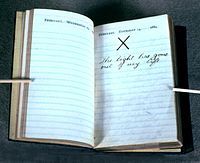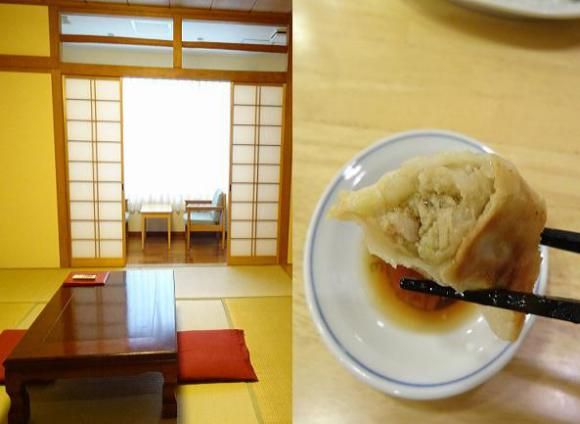Pot-sticker paradise, hot-spring hotel just outside of Tokyo makes for a tasty retreat
Meg MurphyAsk a Japanese person to give some examples of Chinese food, and they’ll likely reply with things like chaahan (fried rice) and the quintessential gyoza (pot-stickers). With their crispy fried outsides and juicy, flavorful insides, you can’t go wrong with gyoza, and many would say that Chinese food chain GYOZANOMANSYU (餃子の満州), based in the Kanto region of Japan, is the leader of them all.
Those wishing to take the gyoza experience a bit further can visit the hot-spring hotel Toumeikan in Gunma Prefecture, managed by GYOZANOMANSYU, and for a mere 5,900 yen per night (roughly US$59) you can stay in one of their cozy Japanese-style rooms, take a relaxing soak in the onsen hot springs, and get your fill at their breakfast buffet. Located deep in the mountains of Gunma, yet within a two- to three-hour drive from Tokyo, makes this a great place for a weekend getaway. Albeit one involving lots of garlic and chives.
02/14/2015 archive
Feb 14 2015
Random Japan
Feb 14 2015
Health and Fitness News
 Welcome to the Stars Hollow Gazette‘s Health and Fitness News weekly diary. It will publish on Saturday afternoon and be open for discussion about health related issues including diet, exercise, health and health care issues, as well as, tips on what you can do when there is a medical emergency. Also an opportunity to share and exchange your favorite healthy recipes.
Welcome to the Stars Hollow Gazette‘s Health and Fitness News weekly diary. It will publish on Saturday afternoon and be open for discussion about health related issues including diet, exercise, health and health care issues, as well as, tips on what you can do when there is a medical emergency. Also an opportunity to share and exchange your favorite healthy recipes.
Questions are encouraged and I will answer to the best of my ability. If I can’t, I will try to steer you in the right direction. Naturally, I cannot give individual medical advice for personal health issues. I can give you information about medical conditions and the current treatments available.
You can now find past Health and Fitness News diaries here and on the right hand side of the Front Page.
Follow us on Twitter @StarsHollowGzt

On Sunday I cooked up a big pot of nutty-tasting kasha, the cooked cereal made with toasted buckwheat groats. I enjoyed it all week. I stirred some into a frittata along with leeks and spinach, added it to two different salads and to buckwheat pancakes. I ate it plain, with a little milk and maple syrup as porridge for breakfast, and made a dinner in a bowl of kasha topped with mushroom ragout and kale. [..]
But this week everything changed when I bought a box of medium-grain kasha at the supermarket and took another stab at it. These groats were cracked, like bulgur, something I hadn’t seen before. (Indeed, I had reported years ago in this column that it was the medium cut of the grain that made them mushy; now I am convinced that I had it wrong, and that the cooking method also plays a key role). Cracked kasha (the package says “medium granulation”) is still a whole grain – nothing has been removed – but the grains have more exposed surfaces and are smaller than the whole pyramid-shaped buckwheat groats that I usually cook. I followed the directions on the box, mixing the buckwheat with a beaten egg and toasting it in a dry pan over high heat before adding hot water, salt and a little butter and simmering for 10 minutes. Then I did what I always do when I cook grains (and this instruction isn’t on the package): I let them sit for 10 minutes with a tea towel placed between the top of the pan and the lid to absorb steam from the grains. The kasha turned out perfectly – dry and fluffy, with the wonderful nutty/earthy buckwheat flavor I love.
I used my kasha all week for various dishes, including the big bowl with mushroom ragout and kale that follows these basic cooking instructions.
Frittata With Kasha, Leeks and Spinach
Adding kasha to a frittata contributes a wonderful nutty flavor, and just the right amount of bulk.
Nutty, earthy grains mix with crunchy, juicy apples for a great salad that holds up well on a buffet.
Double-Buckwheat Blueberry Pancakes
Cooked kasha contributes great texture and flavor to pancakes.
Spinach and Endive Salad With Kasha and Mushrooms
A substantial leafy green salad enlivened by the nutty flavor of kasha.
Feb 14 2015
Punting the Pundits
“Punting the Pundits” is an Open Thread. It is a selection of editorials and opinions from around the news medium and the internet blogs. The intent is to provide a forum for your reactions and opinions, not just to the opinions presented, but to what ever you find important.
Thanks to ek hornbeck, click on the link and you can access all the past “Punting the Pundits”.
Follow us on Twitter @StarsHollowGzt
Jessica Valenti: Marriage equality didn’t end homophobia. LGBT people face discrimination every day
As state after state makes same-sex marriage legal, it’s easy to be placated by the notion that we’re nearing true equality. For heterosexual cisgender people, marriage equality has become a self-congratulatory rallying point, a string of victories we point at to prove that things can, in fact, get better. We love the wedding pictures and the joy of excited couples together for decades who are finally able to get married.
But let’s not make it rain celebratory rice just yet. Marriage equality is far from the only indicator of how well we’re doing in tackling LGBT issues, and, despite some policy hurdles we’ve surmounted, homophobia in all its forms remains a pervasive force in LGBT people’s daily lives – even in so-called progressive enclaves.
Steven W. Thrasher: ‘Everyone’s a little bit racist’ doesn’t excuse ongoing police violence
On Thursday, FBI director James Comey gave a long and searching speech called “Hard Truths: Law Enforcement and Race” – complete with deep meditations on race, predictable but annoying equivocations, and harmful misdirection about the violence of policing.
It also included – in an unquestionable first for an FBI director giving a public speech – quotes from the oversexed, cursing puppets of the Broadway musical Avenue Q. (Who knows if FBI brass have quoted them in private before; if only J Edgar Hoover could have lived to see this!) [..]
And while it was encouraging to hear Comey say that Americans need some actual goddamned government statistics on how often cops kill people rather than relying upon sites like KilledByPolice.net, it didn’t exactly fill me with confidence that he was so convinced only after he “listened to a thoughtful big city police chief express his frustration with that lack of reliable data” who “didn’t know whether the Ferguson police shot one person a week, one a year, or one a century.”
Does it matter? Isn’t one lost life one too many
“Where will I get my news each night,” lamented Bill Clinton this week. This might have been a reaction to the fall from grace of Brian Williams, America’s top-rated news anchor, who was suspended for embellishing details of his adventures in Iraq. In fact the former US president was anticipating withdrawal symptoms for the impending departure of the comedian Jon Stewart, who – on the same day as Williams’s disgrace – announced that he will step down as the Daily Show host. [..]
Bill Clinton does not mourn alone.
Eugene Robinson: Obama’s Ambivalent War Logic
President Obama’s request to Congress for authority to use military force against the Islamic State explains his view of why to fight this war. But it doesn’t really tell us how.
Obama has asked to be liberated and constrained at the same time. He wants no geographical boundaries placed on his ability to go after the Islamic State and “associated persons or forces.” But he also asks that Congress rule out “enduring offensive ground combat operations” and wants the war authority to expire after three years.
This is walking an awfully fine line. One has to wonder whether the president is trying to satisfy both hawks and doves in Congress-or displaying his own ambivalence about using military force in a situation where, he has said, there is “no American military solution.”
David Sirota: Border Security Is Not an Immigration Cure-All
With the opening of the new Congress, Republican lawmakers have been promising a renewed focus on border security as a supposed cure-all for America’s broken immigration system. Left unaddressed, though, is a simple question: How does border security address the status of millions of undocumented immigrants currently in the United States?
The answer is that it probably won’t, according to a person who knows a thing or two about immigration: Felipe Calderon.
In a recent interview, the former Mexican president told me that he believes the crackdown on undocumented immigration combined with intensified border security has prompted large numbers of undocumented Mexican laborers to remain in the U.S. permanently-even as many prefer to go home-out of fear they will never be able to return.
Joe Conason: Big Lies, Little Lies and the Punishment of Brian Williams
The harshest penalties usually tend to be brutal, vengeful and excessive-even when the offender is a celebrity journalist like Brian Williams. Suspended without pay from his post as the “NBC Nightly News” anchor for six months, Williams may be facing the end of his career in television news, which would be roughly equivalent to capital punishment.
Williams is in the public dock for telling a false story about his experiences covering the American invasion of Iraq; the disclosure humiliated him, his colleagues and his network when exposed. For the time being, at least, he has lost the trust of many in his audience. Enforced absence from the job he loves-and wanted all his life-is a sanction that will sting far more than the barbed jokes, ugly headlines and lost millions in salary. Off air, he may find time to engage in serious introspection, issue a forthright apology and hope for redemption.
Troubling as his transgression was, I nevertheless hope for his redemption, too.
Feb 14 2015
On This Day In History February 14
This is your morning Open Thread. Pour your favorite beverage and review the past and comment on the future.
Find the past “On This Day in History” here.
February 14 is the 45th day of the year in the Gregorian calendar. There are 320 days remaining until the end of the year (321 in leap years).
On this day in 1884, future President Theodore Roosevelt’s wife and mother die, only hours apart.
Roosevelt was at work in the New York state legislature attempting to get a government reform bill passed when he was summoned home by his family. He returned home to find his mother, Mittie, had succumbed to typhoid fever. On the same day, his wife of four years, Alice Lee, died of Bright’s disease, a severe kidney ailment. Only two days before her death, Alice Lee had given birth to the couple’s daughter, Alice.

Roosevelt left his daughter in the care of his sister, Anna “Bamie/Bye” in New York City. In his diary he wrote a large X on the page and wrote “the light has gone out of my life.”
A short time later, Roosevelt wrote a tribute to his wife published privately indicating that:
She was beautiful in face and form, and lovelier still in spirit; As a flower she grew, and as a fair young flower she died. Her life had been always in the sunshine; there had never come to her a single sorrow; and none ever knew her who did not love and revere her for the bright, sunny temper and her saintly unselfishness. Fair, pure, and joyous as a maiden; loving , tender, and happy. As a young wife; when she had just become a mother, when her life seemed to be just begun, and when the years seemed so bright before her-then, by a strange and terrible fate, death came to her. And when my heart’s dearest died, the light went from my life forever
To the immense disappointment of his wife’s namesake and daughter, Alice, he would not speak of his wife publicly or privately for the rest of his life and made no mention of her in his autobiography.
Feb 14 2015
The Breakfast Club (Italian Ice)
 First, a recipe for Gelato–
First, a recipe for Gelato–
Ingredients
- 2 1/4 cups whole milk
- 1/3 cup heavy cream
- 3/4 cup sugar, divided
- 1 cup unsweetened cocoa powder (recommended: Pernigotti)
- 2 ounces bittersweet chocolate, finely chopped
- 4 extra-large egg yolks
- 2 tablespoons Mexican coffee flavor liqueur (recommended: Kahlua)
- 2 teaspoons pure vanilla extract
- Large pinch kosher salt
- 8 chocolates, roughly chopped, optional (recommended: Baci)
Directions
Heat the milk, cream, and 1/2 cup sugar in a 2-quart saucepan, until the sugar dissolves and the milk starts to simmer. Add the cocoa powder and chocolate and whisk until smooth. Pour into a heat-proof measuring cup.
Place the egg yolks and the remaining 1/4 cup sugar in the bowl of an electric mixer fitted with the paddle attachment and beat on high speed for 3 to 5 minutes, until light yellow and very thick. With the mixer on low speed, slowly pour the hot chocolate mixture into the egg mixture. Pour the egg and chocolate mixture back into the 2-quart saucepan and cook over medium-low heat, stirring constantly, until thickened. A candy thermometer will register about 180 degrees F. Don’t allow the mixture to boil!
Pour the mixture through a sieve into a bowl and stir in the coffee liqueur, vanilla, and salt. Place a piece of plastic wrap directly on top of the custard and chill completely.
Pour the custard into the bowl of an ice cream maker and process according to the manufacturer’s directions. Stir in the roughly chopped chocolate, if using, and freeze in covered containers. Allow the gelato to thaw slightly before serving.
It’s hard to write about Art Music without getting trapped in the Romantics and especially the Germans and the Russians. As I struggle to break free I look to the mild climes of Italy.
The reason the Brass players like Respighi is that there are a lot of parts for them and you don’t have to spend the concert flipping through pages of rests trying to look interested in a piece you’ve only heard a thousand times in rehearsal and to which your only contribution is an ear shattering blat at the end to wake up the audience and let them know it’s over.
Ottorino is another one of these ‘academic’ composers like Rimsky-Korsakoff and was a great aficianado of Medieval, Classical, and Baroque music and wrote a great deal of stuff that echoed their style, but he also bought into the Romantic ideal that Art should be expressive and emotive rather than formalistic and clever.
Because he was a Romantic Nationalist (though he didn’t overuse the whole ‘folk music’ trope) he was a particular favorite of Benito Mussolini and used what powers of persuasion he had to protect artists like Toscanini and scientists like Fermi from the repressive Fascist regime until his death in 1936.
On the ship back home from Brazil, Respighi met by chance with Italian physicist Enrico Fermi. During their long conversation, Fermi tried to get Respighi to explain music in terms of physics, which Respighi was unable to do. They remained close friends until Respighi’s death in 1936.
Mistah Kurtz? He dead. A penny for the old Guy.
We are the hollow men. We are the stuffed men. Leaning together headpiece filled with straw, alas! Our dried voices when we whisper together are quiet and meaningless as wind in dry grass or rats’ feet over broken glass in our dry cellar.
Shape without form, shade without colour, paralysed force, gesture without motion.
Those who have crossed with direct eyes, to death’s other Kingdom remember us – if at all – not as lost violent souls, but only as the hollow men. The stuffed men.
Ah. This is the way the world ends. This is the way the world ends. This is the way the world ends. Not with a bang but a whimper.
And our pointy wands strung with cat gut saw at rain wood boxes while brazen trumps blare and reeds vibrate to the complicated fingering of masters beaten by the conductor’s stick to the composer’s tune.
Is beauty truth? What is beauty?
In the late Romantic period the Symphony was supplemented by the Tone Poem. They were enormously popular (among the elite Art Music set) because they were revolutionary rule breaking masterpieces.
I’m sure Respighi never considered them that because they are in fact entirely conventional in form and execution. Still, he would not have bothered writing them if they did not remind him of his experiences. The three he devoted to Rome are quite famous and frequently performed.
Obligatories, News and Blogs below.


Recent Comments